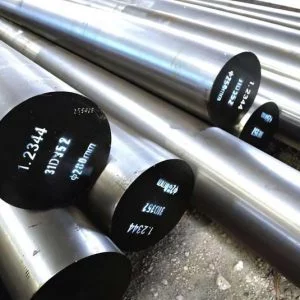Introduction

H13 tool steel has long been renowned for its exceptional properties in various industrial applications. From manufacturing to tooling, its versatility and durability make it a preferred choice among engineers and craftsmen. In this comprehensive guide, we delve into the characteristics, applications, and benefits of H13 tool steel.
Applications of H13 Tool Steel
The versatility of H13 tool steel finds applications across various industries:
Die Casting: H13 tool steel is highly favored in die casting applications, where metal is injected into a mold cavity under high pressure. The thermal fatigue resistance and excellent hot hardness of H13 steel make it an ideal choice for die casting dies. These dies are subjected to extreme temperatures and pressure cycles during the casting process. The ability of H13 steel to withstand such conditions without deformation or failure ensures the production of high-quality castings with intricate shapes and fine details.
Extrusion Dies: In the extrusion process, H13 steel plays a crucial role in shaping materials such as metals, plastics, and rubber into desired profiles or shapes. The combination of toughness and wear resistance exhibited by H13 steel makes it well-suited for extrusion die applications. Extrusion dies made from H13 steel can withstand the abrasive wear and high pressures encountered during the extrusion process, leading to prolonged tool life and consistent product quality.
Forging: Forging operations involve shaping metal by applying compressive forces using hammers, presses, or dies. H13 steel’s heat resistance and toughness make it an excellent choice for manufacturing forging dies and punches. These tools are subjected to high temperatures and mechanical stresses during the forging process. H13 steel’s ability to maintain its properties under such conditions ensures the durability and reliability of forging tools, leading to efficient production processes and high-quality forged components.
Injection Molding: Injection molding is a widely used manufacturing process for producing plastic parts in large volumes. H13 tool steel is favored in injection molding applications due to its ability to withstand repeated thermal cycles without significant degradation. Injection molds made from H13 steel can maintain precise dimensions and surface finishes over multiple molding cycles, ensuring the production of consistent and high-quality plastic parts.
Aluminum and Zinc Die Casting: H13 steel’s superior thermal conductivity makes it a preferred choice for molds used in aluminum and zinc die casting processes. These processes involve injecting molten metal into a mold cavity at high pressures to produce intricate and complex parts. H13 steel molds facilitate rapid heat dissipation during the casting process, allowing for shorter cycle times and improved productivity. Additionally, the excellent wear resistance of H13 steel ensures the longevity of the molds, reducing maintenance costs and downtime.
Advantages of H13 Tool Steel
The utilization of H13 tool steel offers several advantages:
- Extended Tool Life: Its excellent wear resistance and toughness contribute to prolonged tool life, reducing downtime and production costs.
- High Heat Resistance: H13 maintains its properties at high temperatures, ensuring reliability in demanding applications.
- Ease of Machining: Despite its hardness, H13 steel can be machined effectively, enhancing manufacturing efficiency.
- Versatility: From die casting to extrusion, H13 steel’s versatility makes it suitable for a wide range of applications.
Understanding H13 Tool Steel

H13 tool steel, a chromium-based hot work steel, is renowned for its high toughness and resistance to thermal fatigue. It is characterized by its excellent combination of hardness, abrasion resistance, and machinability. Let’s explore its key properties:
| Property | Description |
|---|---|
| Hardness | H13 tool steel exhibits high hardness, typically around 50-52 HRC. |
| Toughness | It offers excellent toughness, ensuring resistance to thermal fatigue and cracking. |
| Wear Resistance | H13 steel possesses exceptional wear resistance, crucial for tooling applications. |
| Machinability | Despite its high hardness, it maintains good machinability, facilitating manufacturing processes. |
| Heat Resistance | It retains its properties even at elevated temperatures, making it suitable for high-temperature applications. |
Conclusion
In conclusion, H13 tool steel stands out as a versatile and reliable material in numerous industrial applications. Its exceptional combination of hardness, toughness, and heat resistance makes it indispensable in tooling, manufacturing, and other demanding environments. Understanding its properties and applications is essential for harnessing its full potential in diverse engineering endeavors.
By exploring the versatility of H13 tool steel, engineers and manufacturers can optimize their processes, enhance productivity, and achieve superior results across a spectrum of applications.
FAQ
Q:What are the recommended heat treatment processes for H13 tool steel?
A:H13 steel is typically hardened by austenitizing at around 1000°C followed by oil or air quenching and tempered at specific temperatures to achieve desired hardness and toughness.
Q:Can H13 tool steel be welded?
A:Yes, H13 steel can be welded using conventional welding methods. However, proper preheating and post-weld heat treatment are essential to avoid cracking and ensure optimal properties.
Q:What are the main factors affecting the performance of H13 tool steel?
A:Factors such as heat treatment, surface finish, and proper tool design significantly influence the performance and longevity of H13 tool steel in various applications.
